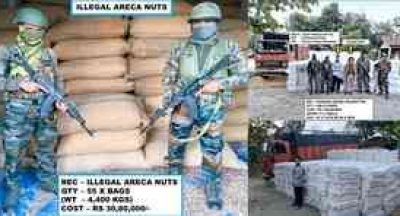India’s Coastal Security: Perspectives, Challenges and Prospects
India will now allow its police stations on land to extend their jurisdiction to 200 nautical miles into the high seas. The Union Home Ministry has extended the jurisdictional limits for notified police stations from the existing 12 nautical miles to 200 nautical miles by issuing a government notification. As many as 10 police stations have already been notified in the eight states that share the Indian coastline. Following the 26/11 terror attacks, the Coast Guard were made responsible for securing Indian territorial waters extending up to 12 nautical miles (about 22 kilometers) from the shore, and new coastal police stations had been proposed to maintain security up to five nautical miles from the shore. The new limits of 200 nautical miles for land police will now add greater depth to the patrolling. The extension was an important development in allowing a greater say to local police while dealing with cases of smuggling and terrorism. This is an important development in an attempt to secure India’s 7,516-km-long coastline. Each state, just like how Mumbai has the Yellow Gate police station, will have its own notified station with a territory jurisdiction of 200 nautical miles. Union Home Minister Mr. Rajnath Singh approved proposal by Maharashtra Chief Minister Mr. Devendra Fadnavis to create Central Marine Police Force to patrol Indian coast line. Marine policing is a specialised job, so a central marine police force be created to protect sea, coast, ports and vital installations.
Limitations of Coastal Security Measures
Coastal Security measures implemented post 26/11 has enhanced surveillance and patrolling of Coastal areas. There are still some challenges which need to be taken care of, such as:
Detection of small boats which are being increasingly used by the non-state actors for their operations remains a daunting task especially so in dark and bad weather conditions.
Physical Guarding of Coast is not feasible by positioning security men all along the coast and at the sea like a typical ‘bandobast’ undertaken on land by the Police to nab criminal or terrorist.
Identification at sea continues to remain a challenge as coastal waters are highly crowded. Identification of a target boat midst large number of our own fishing boat and dense shipping traffic is very difficult. Unregulated fishing further complicates identification of friendly or foe. Further, identification of personnel manning boats is equally difficult in the absence suitable identity cards.
Identification problem is not only for small boats like the one used by Kasab for 26/11 attacks, but it also includes identification of thousands of containers and cargo vessels that call at our Ports or pass close to our coasts to prevent smuggling of arms, ammunition, explosives and human trafficking.
https://finsindia.org/journal/indias-coastal-security-perspectives-challenges-and-prospects/
Related Posts
MEPs vote to end tobacco agreement
The agreement, first made in 2004 when the EU showed that the three major...
Coalition Congratulates Anti-Contraband Enforcement Unit on First Major Bust
OTTAWA: The National Coalition Against Contraband Tobacco (NCACT) congratulated...
llegal liquor worth Rs73L destroyed
Yavatmal: After a court order, Wani police destroyed illegal liquor worth Rs.73...
Assam Rifles, Mizoram Police seize foreign cigarettes worth Rs 7.8 crore; one held
Aizawl, Dec 19 (IANS) Assam Rifles and Mizoram Police in a joint operation...





